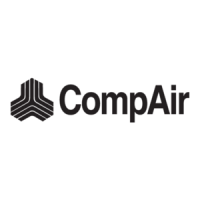71
Always wear long-sleeved overalls, acid-
resistant gloves and safety goggles.
On charging a battery, an explosive gas
mixture is formed in the cells, which can
escape through the vent holes in the
sealing caps. If ventilation is poor, a highly
explosive atmosphere can form around the
battery, and can persist for several hours
after charging.
Thus:
* Never smoke in the vicinity of batteries
that are being charged or have just been
charged.
* Put up prohibition signs for fire, open
flames and smoking in workshops where
batteries are charged.
* Never interrupt a current-carrying circuit
at battery terminals because of the
danger of spark formation.
* Proceed particularly cautiously when
connecting or disconnecting
reinforcement cables or quick-charge
cable clamps.
When starting up using jumper cables or
auxiliary batteries, first connect the positive
terminals and then the negative terminals.
After starting the engine, first disconnect
the negative terminal (ground cable) and
only then the positive terminal. Disconnect
the auxiliary battery after the starting
procedure in order to avoid the risk of the
release of gas (explosion hazard).
3.7 Instructions concerning
particular hazards
Electrical Energy
Only use original fuses with the specified
amperage.
In case of faults in the electrical power
supply, shut down the machine / installation
immediately!
Work on electrical systems or equipment
may only be carried out by a trained
electrician or by trained persons under the
leadership and supervision of a trained
electrician in accordance with the
standards of electrical engineering.
Machine and system parts where service,
maintenance, and repair work is being
carried out must be switched off load, if
required by regulations. First check the
deenergized parts to make sure they are
off load, then connect to ground and short-
circuit, and insulate neighbouring parts that
are under tension.
The electrical equipment of a machine /
installation must be inspected / tested
regularly. Faults, such as loose con-
nections or overheated cables, must be
corrected immediately.
If work has to be carried out on live parts,
then call in a second person to operate the
emergency stop switch or master switch
with overvoltage release. Cordon off the
working area with a red-and-white safety
chain and a warning sign.
Only use insulated tools.
Keep an adequate distance between the
machine/unit and overhead power lines!
When working near overhead power lines,
equipment must not come near the power
lines! Danger! Find out about the safe
distance to be observed!
After touching high-voltage lines:
* Do not leave the machine.
* Move the machine away from the
danger area.
* Warn outsiders not to come closer or
touch the machine.
* Make sure that the voltage is switched
off.
* Do not leave the machine until the line
which has been touched or damaged,
has been switched off load!
When working with high-voltage
assemblies, ground the supply cable after
voltage has been isolated, and short-
circuit the components, e.g. capacitors,
with a ground rod!
Gas, dust, steam, smoke
Only carry out welding, burning, and
grinding work on the machine / installation
when this has been explicitly permitted, as
there may be for example risk of fire and/or
explosion.
Prior to welding, burning and grinding
remove any dirt and inflammable
substances from the machine/system
and its environment and ensure proper
ventilation (danger of explosion)!
Only operate combustion engines in
properly ventilated rooms. Ensure
ventilation is adequate before starting up
in closed rooms.
Follow the local regulations applicable at
the respective site of installation.
Hydraulic and pneumatic systems
Work on hydraulic equipment may only
be carried out by persons with special
knowledge of and experience in hydraulics.
Check all lines, hoses, and bolted
connections regularly for leaks and visible
damage. Repair any damage immediately.
It is essential that damaged parts should be
replaced! Spurting fluid can lead to injuries
and fires.
Before beginning repair work, relieve the
pressure in system sections to be opened
and in pressure lines (hydraulic and
compressed-air lines) in accordance with
the descriptions of the subassemblies.
Hydraulic and compressed-air lines
must be routed and fitted in accordance
with the regulations. Do not confuse the
connections!
The fittings, length, and quality of
hoses must be in accordance with the
requirements.
Noise
Sound-insulating equipment on the
machine / installation must be in operative
position during operation.
Wear the prescribed personal ear muffs.
Caution: this may impair communication
between persons. Warnings may not be
heard. Inform supervisor.
The power of perception may become
adversely affected by the noise and by
carrying ear protection. Warnings may,
therefore, not be heard. Circumspect
behaviour by all concerned is necessary.
Noise, even when it is not very loud, can
make us nervous and irritated, and after a
longer period of time our nervous system
can suffer serious damage. For this reason
a separate machine room is preferable, in
order to keep the noise from the machines
out of the workshop.
Depending on the number of machines in
a machine room, the noise generated can
be very loud. Depending on the level of
sound pressure in places where people are
present, the following precautions must be
taken:
Below 70 dB(A): No special measures
required.
Above 70 dB(A): Persons permanently
present in the room must
wear ear muffs.
Below 85 dB(A): For occasional visitors
who are only in the
room briefly, no special
protective measures are
required.
Above 85 dB(A): Noisy room. There must
be a warning sign at
every entrance pointing
out that persons entering
the room - even if only
briefly - must wear ear
muffs.
3. Security Regulations

